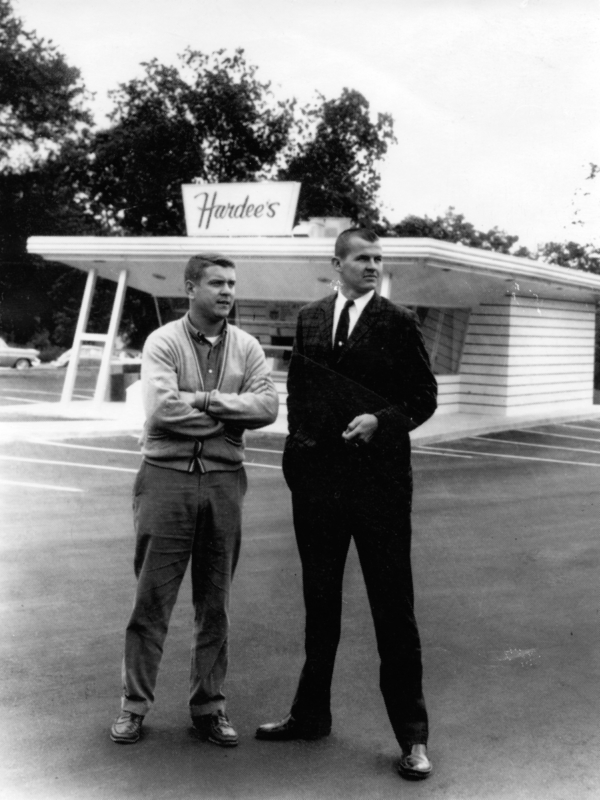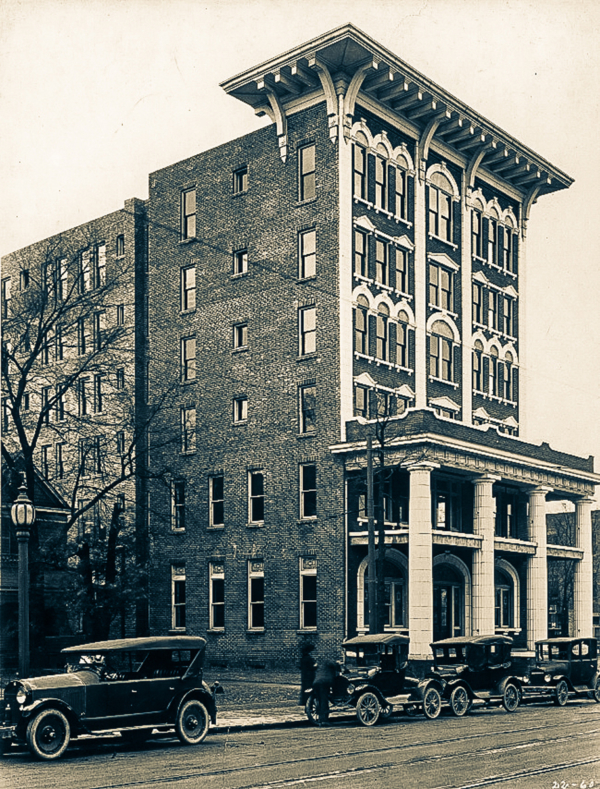Stop 11:
Up-Town
(around the Denny’s Building)

Image courtesy of the Spartanburg County Public Libraries
Charles Bradshaw and Jerry Richardson stand in front of their original Hardee’s location on Kennedy Street soon after its opening in 1961.
In 1961, Jerry Richardson and Charlie Bradshaw, a pair of Wofford College football alumni, opened up a Hardee’s Restaurant franchise on Kennedy Street and thus began a partnership that would grow into Spartan Foods. At its peak it was one of the largest food service companies in the world, with a portfolio that included Hardee’s, Quincy’s Steakhouse, and Denny’s.
Thirty years after his first Hardee’s opened, but still a few years before he founded the Carolina Panthers, Jerry Richardson led the company to construct Spartanburg’s tallest skyscraper, which now houses the corporate headquarters of Denny’s Restaurants. The view from the balconies up there is amazing, but usually closed to the public.
A century ago, this site also had one of Spartanburg’s tallest buildings. Joseph Walker, a Confederate colonel, wealthy businessman, and perennial mayor of Spartanburg during the 1870s and 1880s, had a three story home here with a tower that sprouted up an additional two stories, close to the maximum height limit for wood-frame construction in the days before structural steel.
On the northern side of Main Street, nearly all the buildings between Converse and Liberty Streets date to a short period in the mid-1920s, when First Presbyterian Church sold its original location and moved to its current site further east. That big land sale during one of downtown’s peaks prompted developers to almost immediately fill the block with storefronts, including several with decorative stonework. Today they include Imagination Station, a locally-owned toy store, and Prices Store for Men, one of the oldest businesses in the city.

Image courtesy of the Spartanburg County Historical Association
The Franklin Hotel was the dominant landmark in this section of downtown from the 1920s to the 1980s. Below street level, it included a space that was used at first as a coffee house and later as a bar that hosted live music during the 1970s.
Audio: Stop 11 - Where Did Folks Stay Way Back When